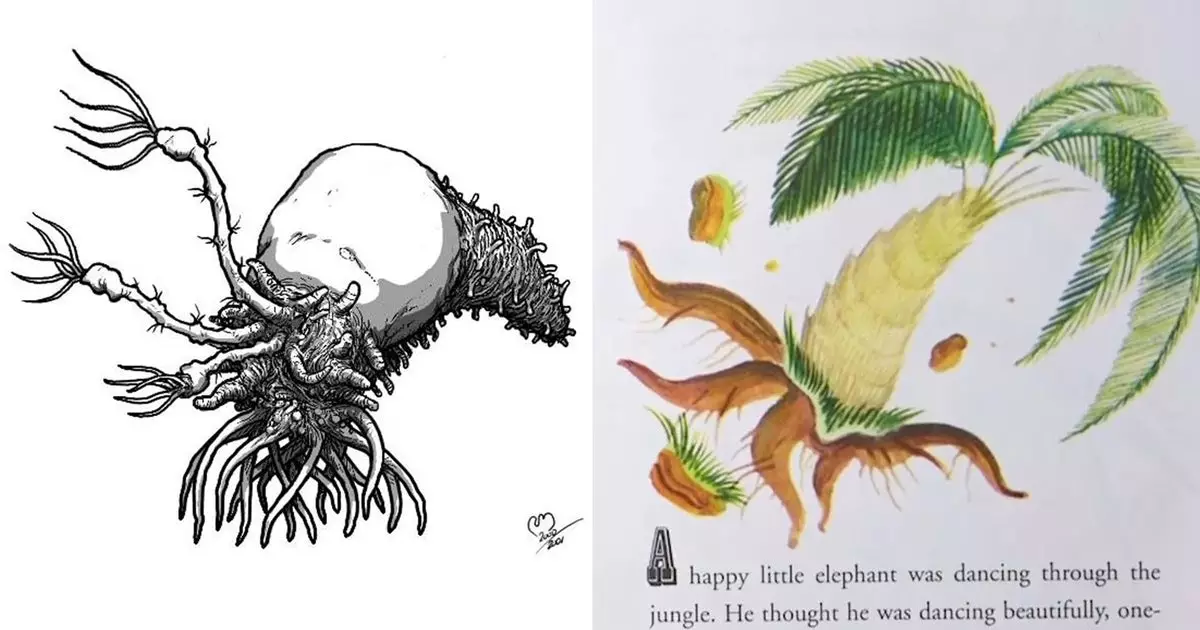The gaming community recently marked the 20th anniversary of Halo 2, a title that revolutionized multiplayer gameplay and left an indelible mark on the first-person shooter genre. Houston, we have a celebrative moment—complete with remastered classic maps and nostalgic levels for players longing for a trip back in time. However, this special occasion not only sparked fond memories but also uncovered anecdotes surrounding the tumultuous development phases that shaped this iconic game. Rolling Stone’s recent interview with two of the designers behind Halo 2 shines a light on the creative processes, challenges, and surprising inspirations that contributed to its success.
The development team behind Halo 2 was notably smaller than today’s blockbuster studios. This limitation required designers like Robert and Lorraine McLees, a talented husband-and-wife duo, to wear multiple hats. When working on character designs, Robert unexpectedly found himself conceptualizing not just weaponry but also the monstrous Flood—an unsettling alien species that contributed an element of horror to the gameplay.
What’s particularly fascinating is Robert’s candid recollection of his initial attempts at designing the Infection Form, the smaller, grotesque aliens that infect players. In a humorous twist of fate, his first iteration resembled a blend between a “house centipede and a blood sausage,” which he describes as both alarming and impractical. As Robert dived deeper into the creative process, inspiration struck him unexpectedly, linked inextricably to a children’s book from his own childhood: “The Saggy Baggy Elephant.” This revelation is both whimsical and terrifying, showcasing how childhood memories can infuse creativity in the most treacherous of forms.
The connection between this innocent story and the horrifying thematic elements of Halo 2 underscores the ways in which childhood influences adult imagination. Robert credits the shape of a palm tree in the book as something that had been lurking in his mind for decades, ultimately influencing the design of the Flood. This unexpected lineage of creativity reminds us that even elements we think are inconsequential can influence our work profoundly. It’s a potent reminder that the best ideas often emerge from the depths of our early experiences, creating a fascinating juxtaposition of light-hearted stories and nightmarish monsters.
While the creativity behind Halo 2 is worth celebrating, it is essential to acknowledge the dark undercurrents of the development process. The interview reveals the intense “crunch” culture pervasive at Bungie during this period, describing a work environment fraught with stress and unrealistic expectations. Developers often clocked in seven-day work weeks for extended periods, leading to feelings of burnout and a sense of hopelessness.
Robert and Lorraine’s account highlights the struggles developers faced during what they perceived as a “make-it-or-break-it” moment for Bungie, where the lack of good management only compounded the challenges. The sentiments expressed are not unique to Halo 2 and resonate with broader issues faced by game developers today.
Crunch culture isn’t a relic of the past; it continues to cast a long shadow over the gaming industry. The recent instances with major game studios imposing similar demands on their employees illustrate a persistent culture that prioritizes production speed over the well-being of creators. There’s an inherent tension between pushing creative boundaries and preserving the mental health of the workforce—a balance that remains elusive.
While it is essential to remember and celebrate the milestones achieved by games like Halo 2, it is equally vital to use these reflections to foster changes in the gaming industry for future generations of developers. We owe it not only to the creators who inspired these treasured experiences but also to those who will bring the next breakthroughs to life.
The 20-year journey of Halo 2 is one to be celebrated, filled with creativity, underlying challenges, and unexpected inspirations. This juxtaposition enriches the narrative of the game, transforming it from a simple multiplayer shooter into a saga of its own. As we look back on this landmark title, it becomes evident that while creativity often springs from the innocent wells of childhood, the industry must evolve to ensure that the individuals who fuel such creativity can do so healthily and sustainably. Halo 2 is not just a game; it’s a reminder of the dedication and sacrifices that go into crafting experiences we hold dear.

